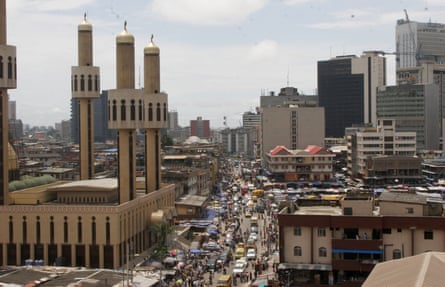The last 100 years have seen an incredible increase in the planet’s population. Some parts of the world are now seeing smaller increments of growth, and some, such as Japan, Germany, and Spain, are actually experiencing population decreases.
The continent of Africa, however, is not following this pattern. Now home to 1.2 billion (up from just 477 million in 1980), Africa is projected by the United Nations Population Division to see a slight acceleration of annual population growth in the immediate future.
In the past year the population of the African continent grew by 30 million. By the year 2050, annual increases will exceed 42 million people per year and total population will have doubled to 2.4 billion, according to the UN. This comes to 3.5 million more people per month, or 80 additional people per minute. At that point, African population growth would be able to re-fill an empty London five times a year.
From any big-picture perspective, these population dynamics will have an influence on global demography in the 21st century. Of the 2.37 billion increase in population expected worldwide by 2050, Africa alone will contribute 54%. By 2100, Africa will contribute 82% of total growth: 3.2 billion of the overall increase of 3.8 billion people. Under some projections, Nigeria will add more people to the world’s population by 2050 than any other country.
The dynamics at play are straightforward. Since the middle of the last century, improvements in public health have led to a inspiring decrease in infant and child mortality rates. Overall life expectancy has also risen. The 12 million Africans born in 1955 could expect to live only until the age of 37. Encouragingly, the 42 million Africans born this year can expect to live to the age of 60.

Meanwhile, another key demographic variable – the number of children the average African woman is likely to have in her lifetime, or total fertility rate – remains elevated compared to global rates. The total fertility rate of Africa is 88% higher than the world standard (2.5 children per woman globally, 4.7 children per woman in Africa).
In Niger, where GDP per capita is less than $1 per day, the average number of children a woman is likely to have in her life is more than seven. Accordingly, the country’s current population of 20 million is projected to grow by 800,000 people over the next 12 months. By mid-century, the population may have expanded to 72 million people and will still be growing by 800,000 people – every 18 weeks. By the year 2100, the country could have more than 209 million people and still be expanding rapidly. This projectionis based on an assumption that Niger’s fertility will gradually fall to 2.5 children over the course of the century. If fertility does not fall at all – and it has not budged in the last 60 years – the country’s population projection for 2100 veers towards 960 million people.
As recently as 2004, the United Nations’ expected Africa to grow only to 2.2 billion people by 2100. That number now looks very out of date.
What has caught demographers off-guard – and has required such dramatic revisions – is that African fertility has not fallen as expected. Precipitous declines in fertility in Asia and Latin America, from five children per woman in the 1970s to around 2.5 today, led many to believe Africa would follow a similar course.
Strong national family planning programmes in various parts of the world jump-started a virtuous circle: fertility declines allowed more educational and other resources to be deployed per capita than otherwise would have been possible. In turn, relatively more educated girls and women were able to increase their economic value and societal status – allowing for even greater agency to access and use contraception.
Unfortunately, since the early 1990s, family planning programmes in Africa have not had the same attention, resulting in slow, sometimes negligible, fertility declines. In a handful of countries, previous declines have stalled altogether and are reversing. Beyond unreliable supplies of contraceptives in many countries the greater obstacles to lower fertility are often male opposition to contraception, religious teachings, social norms, or misinformation about contraceptive options and their side-effects.
These dynamics create the opposite of a virtuous circle. Rapid population growth helps overstrain educational systems and local economies and can be a challenge to any government. Many areas of Australia and England, both fast-growing countries, are contending with overcrowded schools, congested highways and stratospheric housing costs. The reality is that as the size of any populace expands, governments must construct infrastructure apace.
Failure to do so results in per capita declines in living standards. In already economically strained nations, physical goods such as roads, bridges, water supplies, sewers and electricity systems are crucial, but scaling-up educational, public health and security systems are also required. Unemployment, instability and entrenched poverty follow suit. Uneducated girls and women are less likely to overcome social barriers to contraceptive use, such as domineering paternalistic cultures or religious prohibition. Fertility remains high and human suffering builds steam.
A few heroic efforts, such as Family Planning 2020, are attempting to stimulate family planning programmes across the continent, and there are some signs of success. Recent figures from Kenya and Zambia show substantial strengthening of contraceptive use among married women. In Kenya, 58% of married women now use modern contraception, and in Zambia this measure has risen from 33% to 45% in the last three years.
In both cases, the catalysts for improvements were government commitment and commensurate budget financing. The virtuous circle may not be completely out of reach, but many more African governments must make haste and make substantial investments in contraceptive information and access for their people.
Joseph J Bish is director of issue advocacy at the Population Media Center.
Join our community of development professionals and humanitarians. Follow @GuardianGDP on Twitter.
